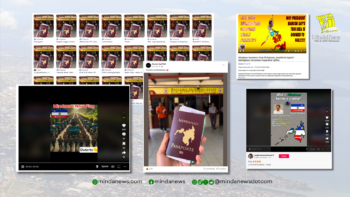
With a chart-topper and controversy on her hit single Selos, 22-year old Maguindanao singer Shaira is now branded “Queen of Bangsamoro Pop.”
This is an amusing thing. Is there such a thing as Bangsamoro music scene where she rules? Is it fair to crown Shaira as queen over a not-so-original composition?
And whoever gave her such a title, or gimmick, had they ever set foot on the Moro community to understand that Bangsamoro is a political term for most people. Or have they figured out if Shaira represents the voice of the Moro youth? Or would she just be a one-hit novelty like the rest of Pinoy pop novelty through the years, like Spaghetti or Pamela One, that gets endlessly played until a Christmas version and then fades into background?
Even as a Mindanaoan I was not fully aware until the Selos controversy popped up that there are Moro artists going pop.
I got to ask a couple of friends from Cotabato what they think of this matter, and this is what they said. Interestingly, there is a Moro music scene thriving through YouTube for the past 20 years, and most of these songs are either cover versions of popular songs, or, yes, popular music replaced by Maguindanao, Meranaw or Tausug lyrics.
There is even a “King of Moro Pop” by the person of Datu Khomenei Camsa Bansuan who has been churning out a combination of copied and original compositions in YouTube since 2007. He even has a popular duet with Queenie Padilla, daughter of actor-turned-senator Robinhood Padilla, who is an Islam convert.
But as I dig further about music history in the Moro community, there is something more interesting.
During the rise of the rebellion of the Moro National Liberation Front in the 1970s, its young fighters had a practice of copying popular Western and Filipino songs (some of which are learned from schools) and replacing them with Maguindanao lyrics that express their political and personal struggles.
This is the content of a research made by Mary Talusan, an ethnomusicologist and assistant professor of Asian-Pacific studies at California State University, that traces the history of Moro music in her paper “From Rebel Songs to Moro Songs: Popular Music and Muslim Filipino Protest”.
Talusan calls these songs “rebel songs” where “songs expressed the personal concerns of ordinary rank-and-file fighters, such as asking one’s sweetheart to remain faithful and fighting for one’s inged, or community.”
One of the songs is copied from the popular American country song “Rhinestone Cowboy” but the rebel song version goes like this:
Mana silan cowboy, (They are like cowboys,)
Di magilek masabil. (unafraid to be martyred.)
Mawasa, mamala; ([They fight] wet or dry
Ulanan a sinangan (They are soaked by the rain)
Kanu mga lalan. (and scored by the sun along the way.)
Namba su paninindeg. (These are the revolutionaries.)
Music is considered haram in Islam, my friends say. But the efforts of the Moro people to use music to channel their ideals signify the need to connect to a broader audience. As Talusan notes, this kind of music is a “hybridity” of mixing the local dialect and nuances with pop music forms.
The paper goes on to note that through the years, while the MILF continued the Bangsamoro struggle, other Moro singers came to the forefront. One of the popular ones in the 1990s is Johnson Ampatuan, whose playlists of songs are streamed on YouTube.
Social media has been a channel for most Moro musicians. There’s a Bangsamoro Music YouTube channel featuring artists from Meranaw, Maguindanao and Tausug tribes. One of the popular songs in that channel is a rap song dedicated to the Meranaw people affected by the Marawi Siege.
Speaking of rap, one of the popular music groups is the hip-hop collective known as Morobeats. Led by Mohammed Bansilan, aka DJ Medmessiah who has been producing hip-hop beats since the ‘90s, he has recruited and produced many young Moro hip-hop artists, including her two daughters, who were featured in Teen Vogue Philippines.
Morobeats may not be as phenomenal as Shaira, but they have a strong following, and even performed on the popular Wish FM Bus platform in 2023. Their appeal to their fans is due to their old-school hip-hop form, where their rap lyrics, or what they call bars, feature less profanity, less dissin’ (disrespecting of other rappers), but more of lyrics that speak of Moro consciousness, pride, social issues and nationalism.
Shaira may be popular, but she’s not the queen. The realm of Bangsamoro music is diverse, and is still in a state of defining themselves along with their overall struggle for Bangsamoro autonomy and identity. But we do enjoy and connect to the beat.
(MindaViews is the opinion section of MindaNews. Tyrone A. Velez is a freelance journalist and writer.)







